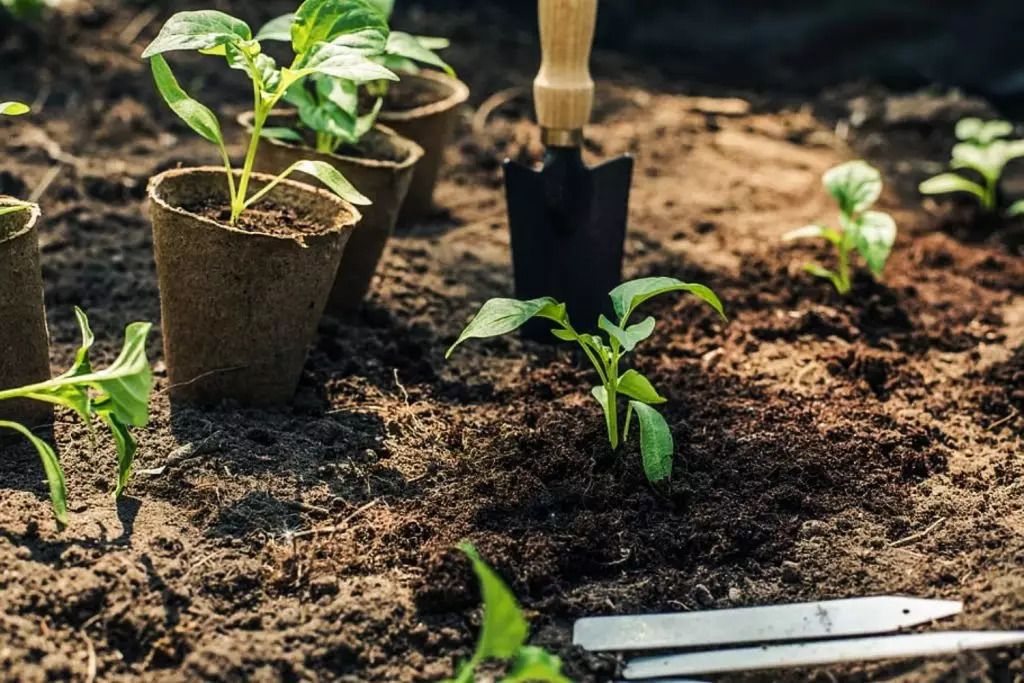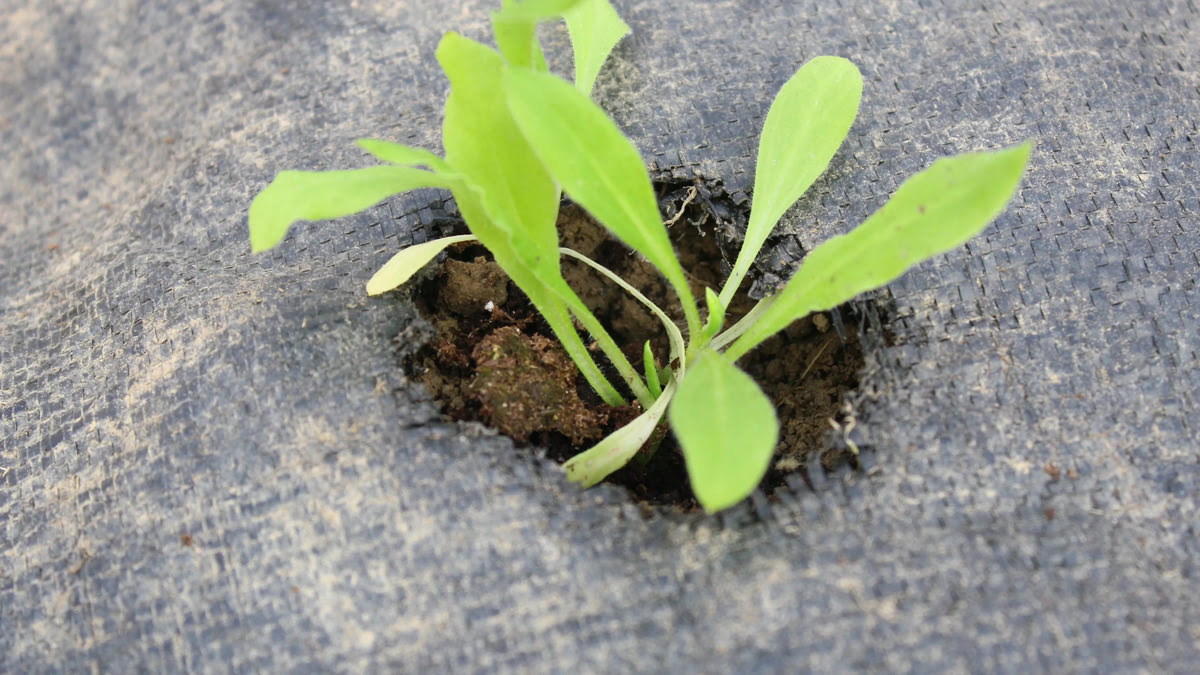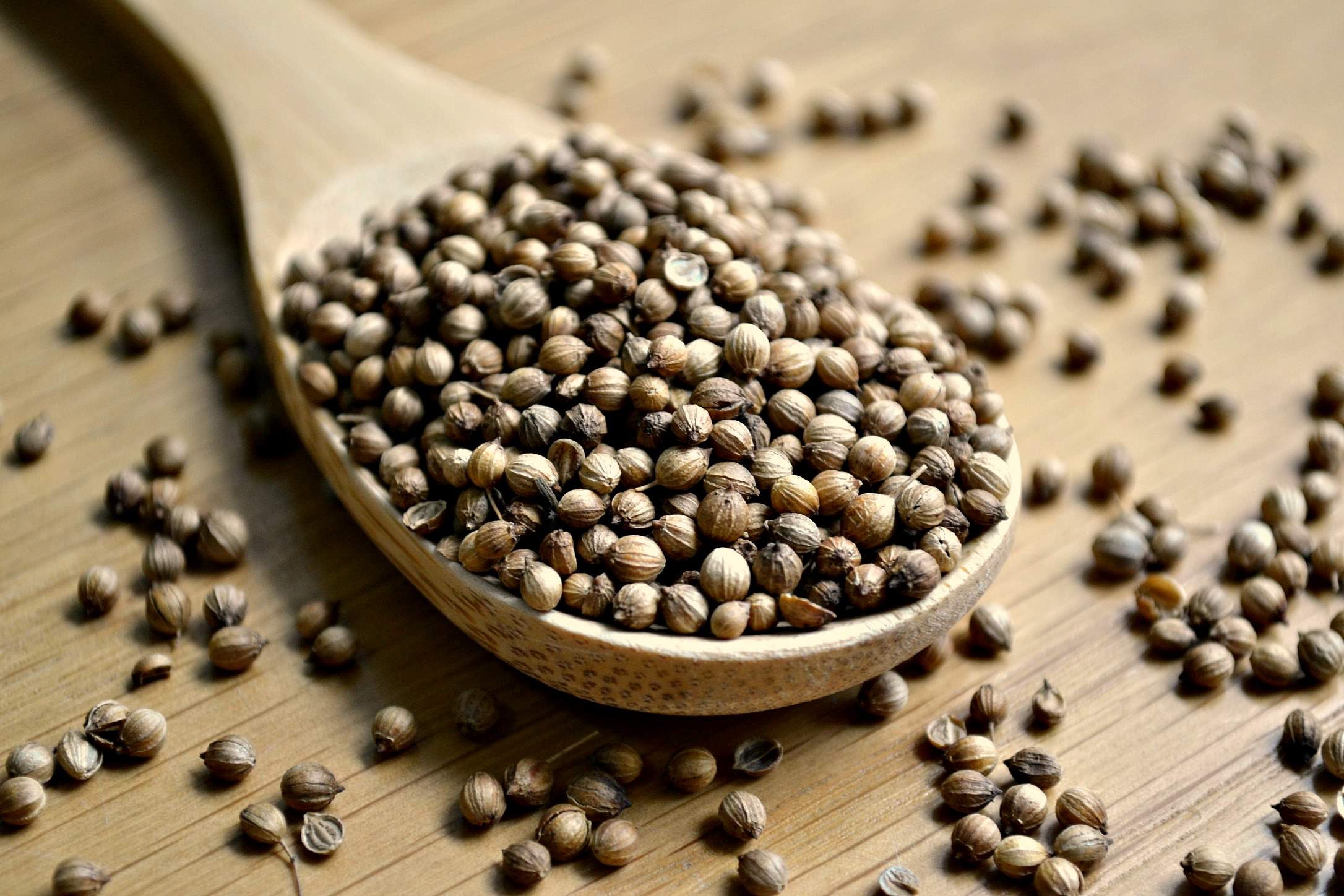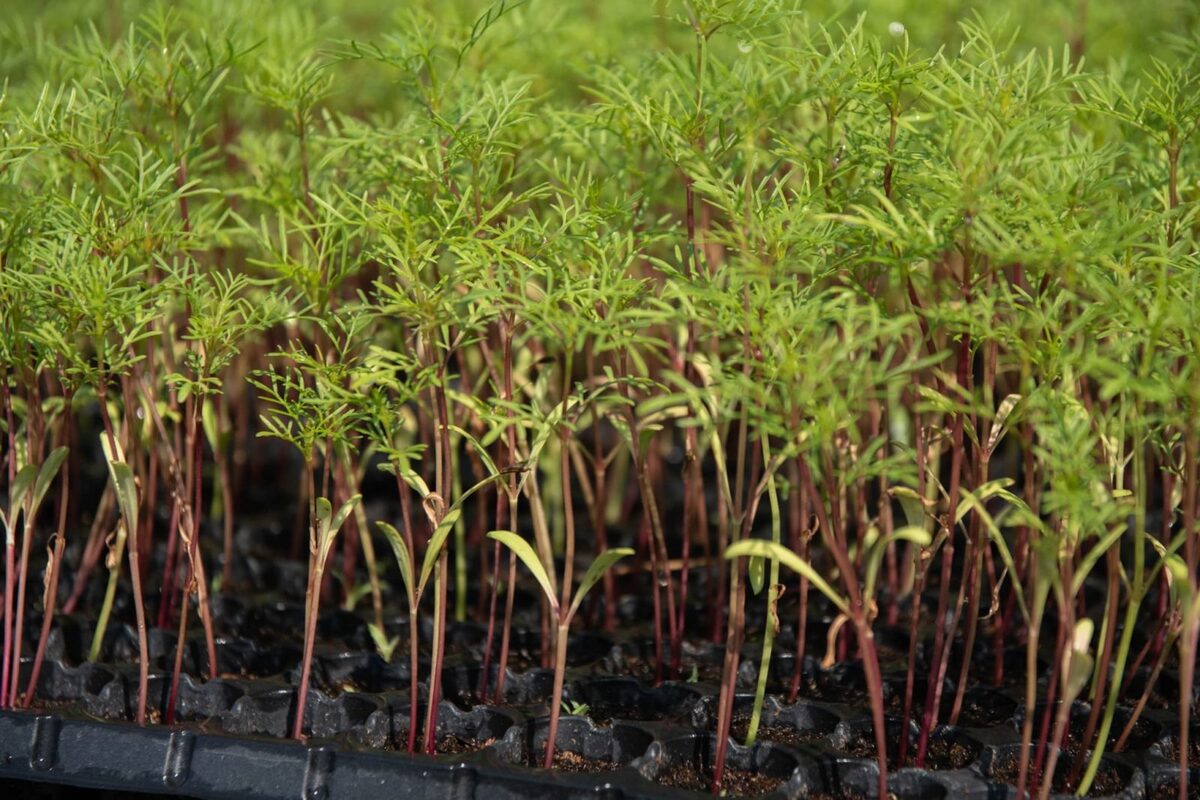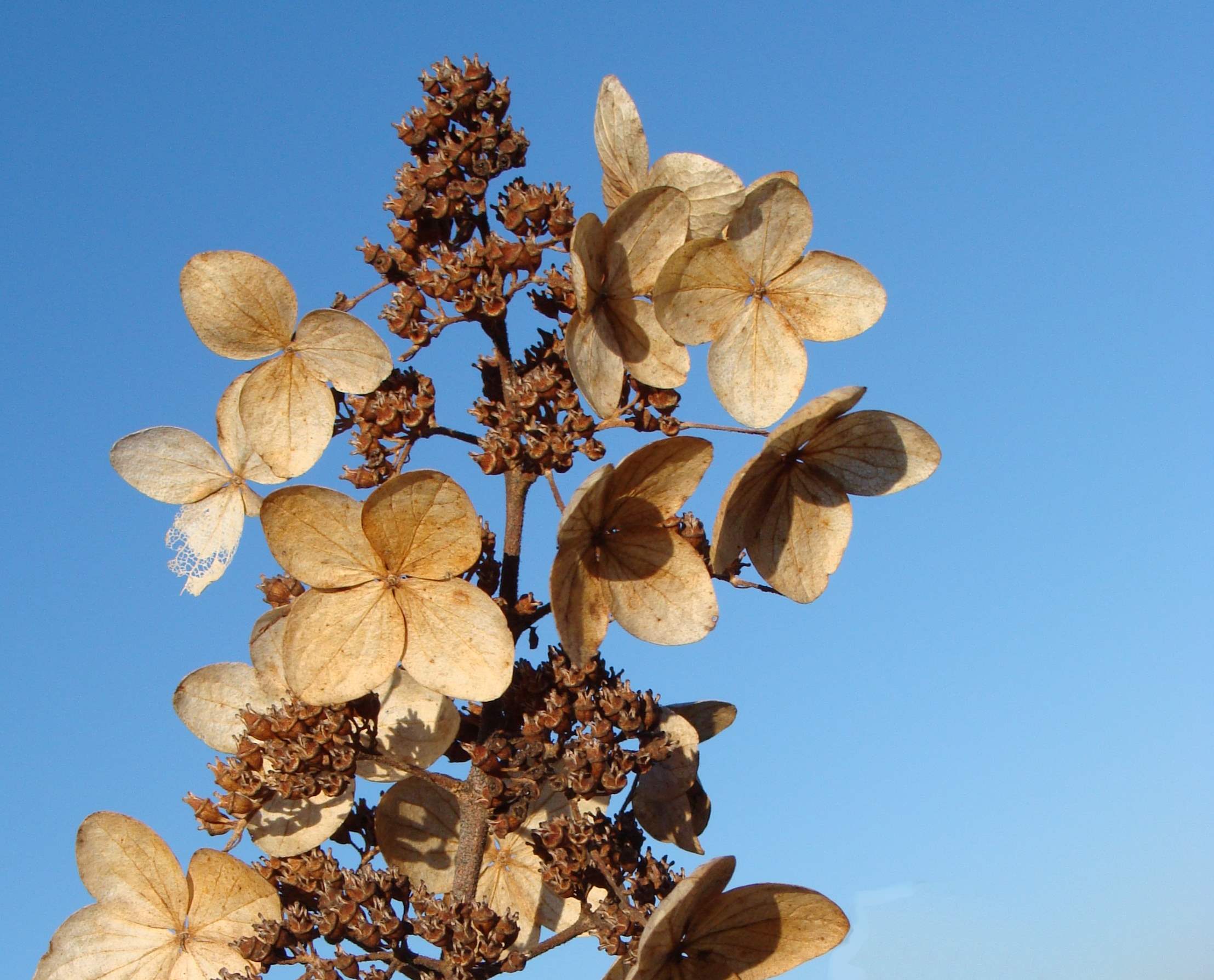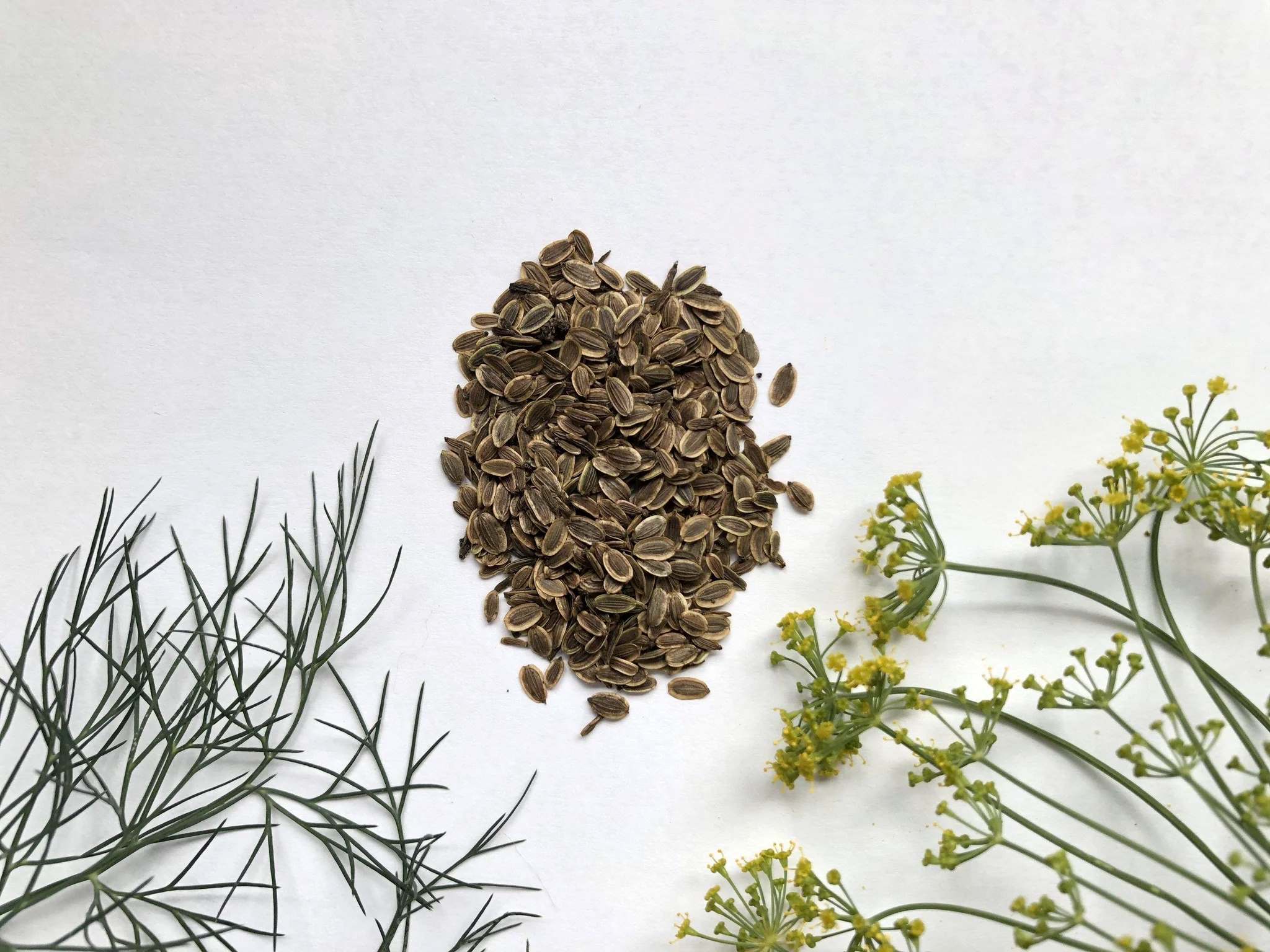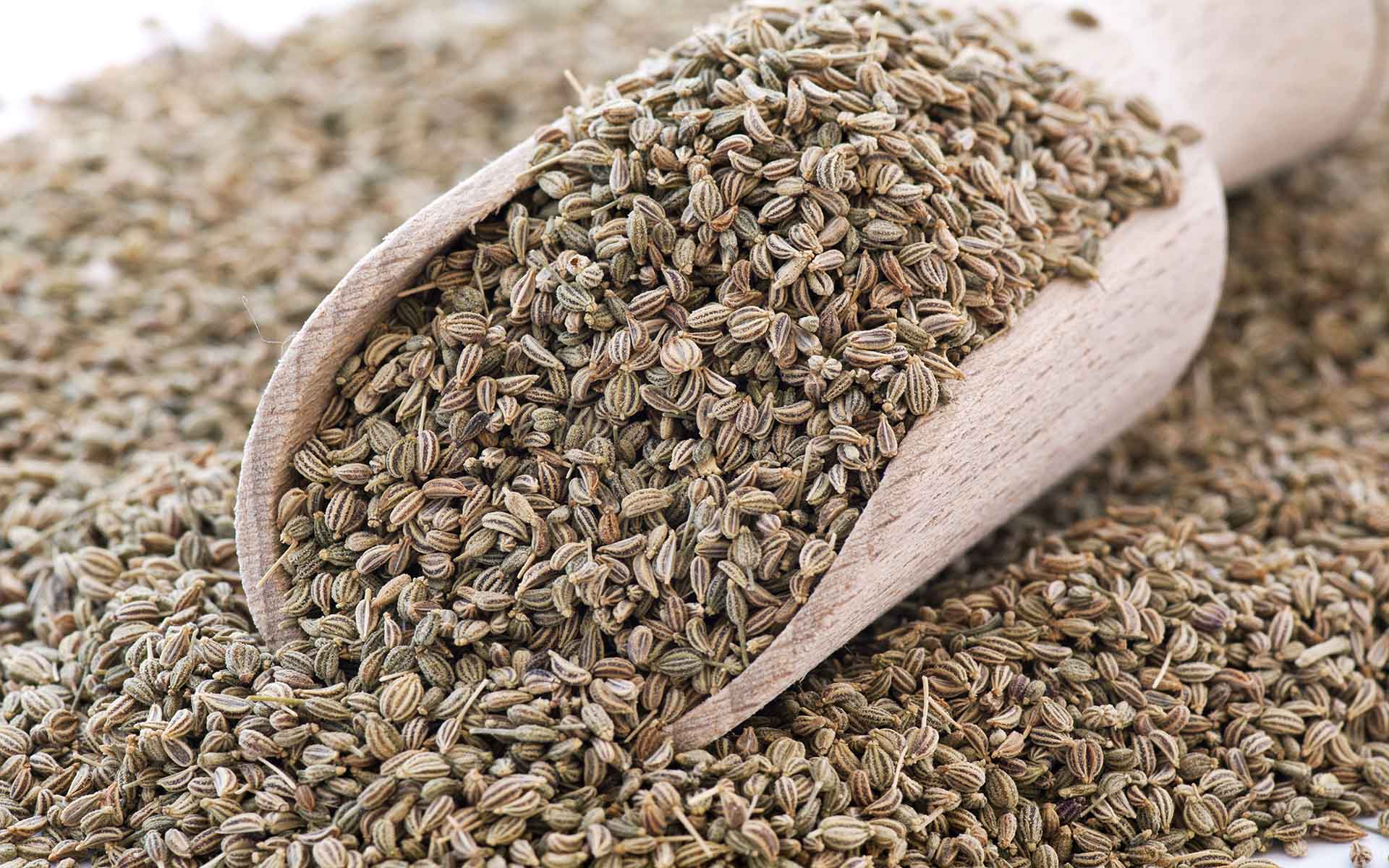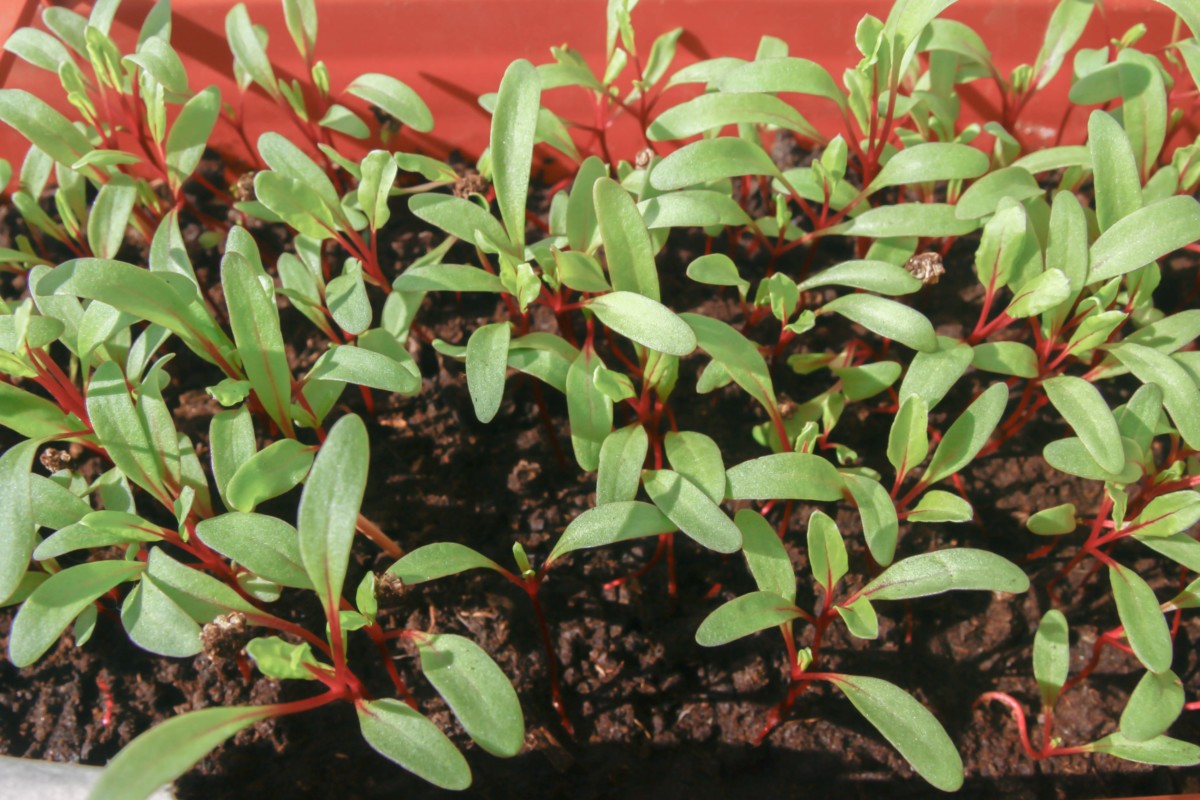Home>Types of Gardening>Ornamental Gardening>What Do Maple Trees Look Like
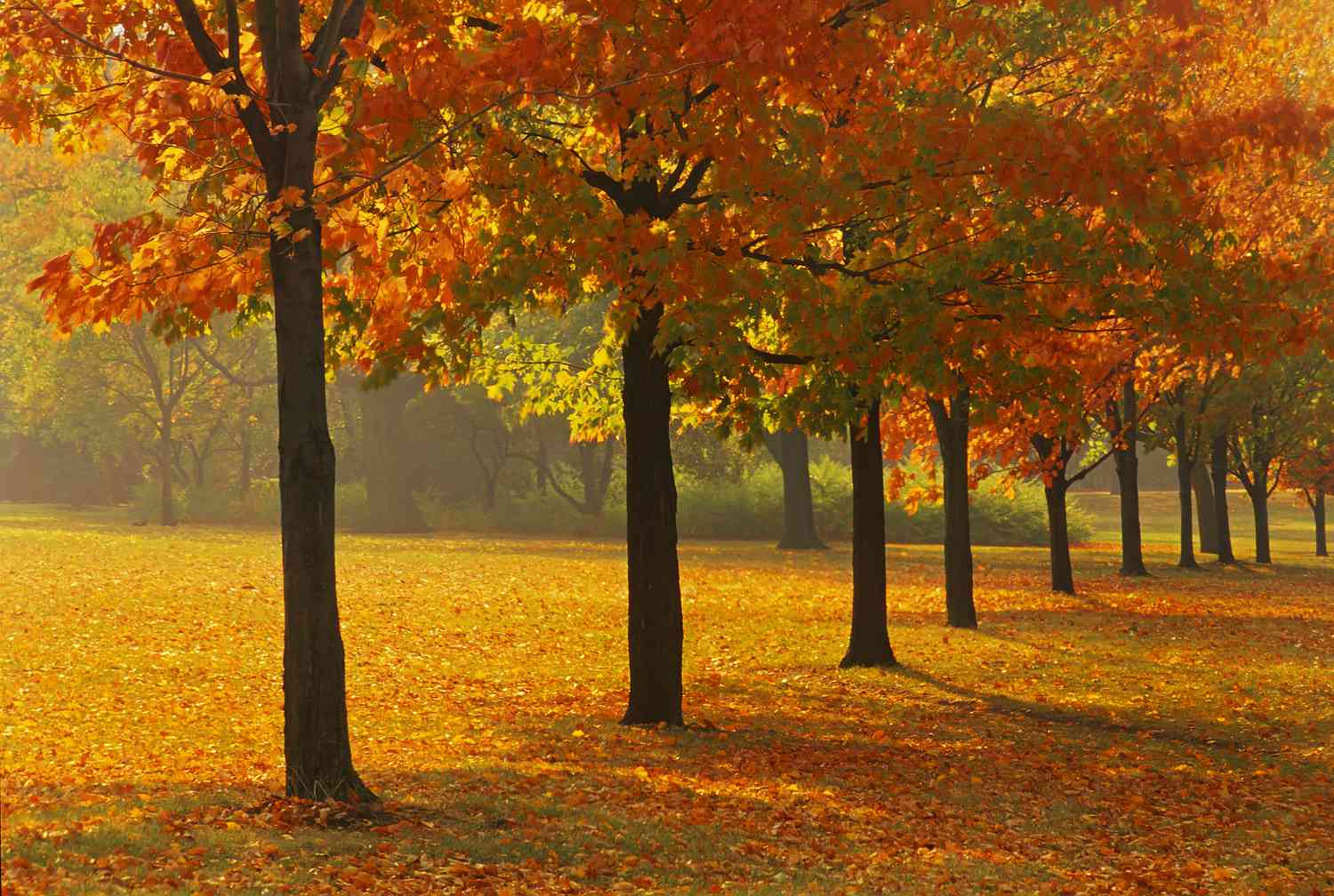

Ornamental Gardening
What Do Maple Trees Look Like
Modified: January 22, 2024
Discover the unique beauty of maple trees in your ornamental gardening. Learn about their distinctive appearance, vibrant colors, and stunning foliage.
(Many of the links in this article redirect to a specific reviewed product. Your purchase of these products through affiliate links helps to generate commission for Chicagolandgardening.com, at no extra cost. Learn more)
Table of Contents
Introduction
Welcome to the wonderful world of maple trees! If you have ever wondered what maple trees look like, you’re in for a treat. Maple trees are a beloved addition to any ornamental garden, known for their stunning beauty and versatility. These majestic trees are native to various regions around the world and have become popular choices for landscaping due to their attractive foliage, unique branching patterns, and impressive size.
Maple trees are often associated with their vibrant autumn colors, but their charm extends beyond just one season. Whether you are an avid gardener or simply appreciate the natural beauty around you, learning about the physical characteristics of maple trees will deepen your understanding and admiration for these remarkable plants.
In this article, we will explore the captivating features that make maple trees so distinctive. From their leaf structure to their branching pattern, we will delve into the world of maple trees to help you visualize and appreciate their remarkable qualities. Whether you are considering adding a maple tree to your garden or simply want to expand your horticultural knowledge, this article will serve as a comprehensive guide to understanding the visual allure of maple trees.
Join us as we embark on this journey to discover what maple trees truly look like. Get ready to immerse yourself in the intricate details of their leaves, the texture and color of their bark, the graceful spread of their branches, and the mesmerizing display of their autumn foliage. By the end of this article, you will have a newfound appreciation for these magnificent trees and the artistic touch they lend to any landscape.
Physical Characteristics of Maple Trees
Maple trees are known for their unique and distinctive physical features that set them apart from other tree species. From their leaf structure to their branching pattern, each characteristic adds to the overall beauty and visual appeal of these remarkable trees.
First and foremost, let’s talk about the leaf structure of maple trees. The leaves of most maple species are palm-shaped, with three to five lobes radiating from a central point. This characteristic shape is instantly recognizable and adds a touch of elegance to the tree’s overall appearance. The edges of the leaves can be smooth or serrated, depending on the specific species. In the spring and summer, the leaves are a lush green color, providing a soothing and calming effect to the surrounding environment.
Next, let’s delve into the texture and color of maple tree bark. Maple trees showcase a wide range of bark textures, from smooth and unblemished to rough and deeply ridged. The color of the bark also varies, ranging from gray to brown to even a reddish hue in some species. The combination of texture and color creates an interesting and visually appealing contrast against the backdrop of a blue sky or a snowy winter landscape.
Another distinguishing feature of maple trees is their branching pattern. Maples tend to have a symmetrical branching structure, with clear horizontal layers of branches. This branching pattern gives maple trees a balanced and harmonious look, making them a popular choice in landscaping designs. The branches of maple trees are sturdy and can withstand heavy loads of snow or ice, adding to their durability and practicality in various weather conditions.
When it comes to size and shape, maple trees can vary widely depending on the species and their specific growing conditions. Some maple trees are compact and suitable for smaller gardens, while others can reach towering heights of over 100 feet. The overall shape of maple trees ranges from oval to rounded, with a gracefully spreading canopy that provides ample shade and creates a welcoming environment beneath its branches.
Lastly, we cannot overlook the flowers and seedpods that adorn maple trees. While the flowers of maple trees are not particularly showy, they add a delicate touch of beauty and signal the transition from winter to spring. The seeds of maple trees are contained within winged structures known as samaras or “helicopters.” These distinctive seedpods are famous for their unique shape and the way they spin and twirl as they fall to the ground, spreading the tree’s offspring far and wide.
In summary, the physical characteristics of maple trees are truly a sight to behold. From their palm-shaped leaves to their varying bark textures and colors, from their symmetrical branching pattern to their unique seedpods, every element contributes to the overall charm and allure of these magnificent trees. Now that we have explored the physical features, let us turn our attention to the breathtaking transformation that maple trees undergo in the autumn season.
Leaf Structure
The leaf structure of maple trees is one of their most distinctive and recognizable features. When you envision a maple leaf, you probably picture its characteristic palmate shape with several lobes radiating from a central point. This unique structure is what sets maple leaves apart from those of other tree species.
Most maple leaves have three to five lobes, though some species may have more or fewer, and the lobes can be deep or shallow, curved or pointed. This palmate shape gives the leaves a symmetrical and balanced appearance, reminiscent of an outstretched hand. The lobes are separated by deep sinuses or indentations, which further enhance the visual interest of the leaf.
The edges of maple leaves can be smooth, serrated, or slightly toothed, depending on the specific species. These variations in leaf edge structure add to the overall diversity and beauty of maple trees. Regardless of the specific shape of the lobes or the edges, maple leaves are known for their vibrant green color during the growing season, creating a lush and refreshing visual display.
The size of maple leaves can also vary depending on the tree species. Some maple leaves are relatively small, measuring a few inches in length, while others can be much larger, reaching up to a foot in length. This variation in leaf size adds to the overall diversity within the maple tree family and contributes to the uniqueness of each individual tree.
Additionally, the veins of maple leaves are prominent and intricately patterned. The central vein, known as the midrib, runs through the center of the leaf and extends into each lobe. From the midrib, smaller veins branch out, creating a network that supplies nutrients and water to the leaf. The intricate patterns of these veins add a level of detail and complexity to the overall leaf structure, showcasing the remarkable design found in nature.
Maple leaves serve an essential role in the tree’s lifecycle. Through a process called photosynthesis, maple leaves absorb sunlight and convert it into energy, enabling the tree to grow and thrive. During the cooler months, as the days grow shorter and temperatures drop, maple leaves undergo a breathtaking transformation, transitioning from their lush green color to a stunning array of autumn hues.
In summary, the leaf structure of maple trees is both visually captivating and functionally significant. The palmate shape, lobes, sinuses, leaf edges, and intricate vein patterns all contribute to the unique beauty of maple leaves. Whether you are admiring the fresh green foliage of spring or marveling at the vibrant colors of autumn, the leaf structure of maple trees is a testament to nature’s remarkable artistry.
Bark Texture and Color
The bark of maple trees is not only a protective layer but also a visually striking and unique feature. Maple tree bark showcases a wide range of textures and colors, adding to the overall charm and appeal of these magnificent trees.
The texture of maple tree bark can vary significantly depending on the species. Some maple trees have smooth bark, which appears almost polished and unblemished. This smooth texture gives the tree a clean and sleek appearance, especially when the bark is a lighter shade, such as gray or light brown. Other maple trees have rough, deeply ridged bark that adds a rugged and textured look to the tree’s exterior. The rough texture of the bark can provide interesting contrast against other smooth surfaces in the garden landscape.
Along with texture, the color of maple tree bark is another fascinating aspect. Maples can exhibit a range of bark colors, from gray and brown to reddish-brown or even a vibrant red hue. The color of the bark can vary within the same species and can change with age, exfoliation, or exposure to sunlight. Some maple species, such as the paperbark maple (Acer griseum), have bark that peels away in thin, papery layers, revealing a cinnamon-colored underlayer. This unique peeling bark adds texture and visual interest to the tree, making it a standout in any landscape.
During the winter months, the color and texture of the bark become even more prominent. With the absence of foliage, the bark becomes the focal point, commanding attention and adding visual appeal to a winter garden landscape. Whether it’s the smooth gray bark of the silver maple (Acer saccharinum) or the deeply ridged bark of the sugar maple (Acer saccharum), each species offers a distinct visual experience.
Not only do the varying textures and colors of maple tree bark create a visually appealing aesthetic, but they also serve a practical purpose. Thick, textured bark provides insulation and protection for the tree against extreme temperatures, pests, and environmental stressors. The bark acts as a natural barrier, safeguarding the delicate inner layers of the tree trunk and branches.
Overall, the texture and color of maple tree bark add depth, character, and visual interest to a landscape. Whether it’s the smooth and polished look of the bark or the rugged texture of deeply ridged surfaces, maple tree bark has the power to captivate and delight the senses. Take a moment to admire the intricate details and unique qualities of maple tree bark, and you’ll gain a newfound appreciation for the beauty that nature has bestowed upon these remarkable trees.
Branching Pattern
The branching pattern of maple trees is both visually appealing and structurally fascinating. Maples exhibit a unique and distinctive branching structure that adds to their overall beauty and allure.
The branching pattern of maple trees is often described as symmetrical and layered. Maples tend to have clear horizontal layers of branches, which give the tree a balanced and harmonious look. These layers of branches create a visually pleasing cascading effect, resembling a series of steps or tiers. This branching pattern not only enhances the aesthetic appeal of the tree but also strengthens its overall structure.
Maple trees also display a characteristic known as opposite branching, where the branches emerge from the main stem or trunk in pairs, directly across from each other. This opposite branching pattern contributes to the symmetrical appearance of the tree and adds to the visual interest. The pairs of branches give the tree a sense of balance and create delightful patterns against the sky.
Another intriguing aspect of maple tree branching is the formation of whorls. Whorls are clusters of branches that emerge from the same point on the stem or trunk, creating a circular or spiral pattern. These whorls can occur at various intervals along the tree’s height and add a unique visual element to the branching pattern.
Maple trees often possess strong and sturdy branches that can withstand heavy loads, such as snow or ice. The robust nature of the branches is attributed to their attachment to the main stem or trunk. The branch attachment is typically strong and close, ensuring stability and resilience in different weather conditions.
In addition to the branching pattern itself, the overall spread and shape of maple tree branches contribute to their aesthetic appeal. Some maple trees have a more upright and columnar growth habit, with branches that remain relatively close to the central trunk. Others have a more spreading or weeping form, with branches that gracefully arch and cascade outward. These variations in branch spread and shape add to the visual diversity and allow for creative possibilities in garden design.
The branching pattern of maple trees serves both functional and aesthetic purposes. Structurally, the symmetrical and layered branching pattern provides strength and stability to the tree, ensuring its longevity. Aesthetically, the branching pattern adds a level of elegance and visual interest that is unique to maple trees.
Take a moment to observe the branching pattern of a maple tree, and you will appreciate the meticulous design and natural beauty that each branch contributes to the overall character of the tree.
Size and Shape
The size and shape of maple trees can vary greatly depending on the species and growing conditions. From compact and petite varieties to towering giants, maple trees exhibit a diverse range of sizes and shapes that add to their visual impact and versatility in landscaping.
Maple trees can vary in height, with some species growing only a few feet tall and others reaching towering heights of over 100 feet. The size of a maple tree can depend on several factors, including its genetic makeup, environmental conditions, and pruning practices. Understanding the potential size of a maple tree is crucial when planning for its placement in a garden or landscape.
In terms of shape, maple trees exhibit a wide range of forms that provide visual interest and artistic appeal. Some maple trees have a rounded or oval shape, with branches that extend outward and create a well-balanced silhouette. These rounded forms add a sense of fullness and symmetry, making them popular choices for specimen trees or focal points in a garden.
Other maple trees have a more pyramidal or columnar shape, with branches that grow more upright and narrow. These compact and vertically oriented trees are ideal for smaller spaces or when a more formal look is desired in the landscape design. The tall, slender shape of these maples lends itself well to creating vertical accents or adding height to a garden design.
Maple trees can also have a more spreading or weeping shape, with branches that gracefully arch and cascade downward. These drooping forms create a soft and elegant look, adding movement and drama to the landscape. Weeping maple varieties, such as the Japanese maple (Acer palmatum ‘Dissectum’), are particularly valued for their cascading branches and delicate foliage.
It’s important to note that the size and shape of maple trees can be influenced by pruning and maintenance practices. Regular pruning can help control and shape the growth of a maple tree, allowing for more precise control over its size and form. Pruning can also be used to highlight specific features or create specific shapes, such as a multi-trunked maple or an espalier-trained specimen.
When selecting a maple tree for your garden or landscape, consider the available space and desired visual impact. A smaller garden may benefit from a compact and upright maple tree, while a larger landscape can accommodate a more majestic and towering specimen. The size and shape of the maple tree you choose should complement the overall design aesthetic and meet the specific needs of the space.
In summary, maple trees come in a variety of sizes and shapes, offering endless possibilities for garden and landscape design. Whether you prefer a rounded, pyramidal, spreading, or weeping form, there is a maple tree that can meet your specific aesthetic preferences and spatial requirements. Allow the size and shape of a maple tree to guide your design choices and create a stunning visual impact in your outdoor space.
Flowers and Seedpods
While maple trees are renowned for their stunning foliage, they also produce unique flowers and distinctive seedpods that add further visual interest and charm. Although not as showy as some flowering trees, maple flowers have their own delicate beauty and play a crucial role in the tree’s reproductive cycle.
Maple flowers typically bloom in the spring, appearing before or alongside the emergence of new leaves. The flowers are usually small and inconspicuous, arranged in clusters or racemes that hang gracefully from the branches. The color of the flowers can vary between maple species, ranging from pale yellow to greenish-yellow or even maroon hues.
While the individual maple flowers may be tiny, they come together to create an elegant display, adding a touch of subtle beauty to the tree. These flowers produce nectar, attracting various pollinators, including bees and butterflies, which play a vital role in the pollination process.
Once the maple flowers have been pollinated, they give rise to seedpods, which are often referred to as samaras or “helicopters.” The distinctive shape of these seedpods is what makes them truly fascinating. Each samara consists of a woody central structure with a single seed attached to it, while its two wing-like structures give it a characteristic helicopter-like appearance.
As the maple tree transitions into late spring or early summer, the seedpods begin to mature and gradually change from their greenish color to a brown or tan hue. When the samaras are fully developed and dry, they detach from the tree and are carried away by the wind, fluttering and rotating as they descend to the ground.
The helicopter-like flight of the samaras helps to disperse the maple tree’s seeds to new locations. This dispersal mechanism ensures the survival and propagation of maple trees, as the seeds are scattered over a wider area, increasing the chances of successful germination and growth.
The process of samara dispersal can be an enchanting sight to behold, as the spinning seedpods create a whimsical dance in the air. Children often delight in collecting these unique seedpods and watching them twirl and glide as they are released from the tree.
In addition to their reproductive function, the flowers and seedpods of maple trees contribute to the overall texture and aesthetic appeal of the tree. They provide an added layer of visual interest, particularly when the flowers are in bloom or when the seedpods develop their charming mature form.
Next time you observe a flowering maple tree, take a moment to appreciate the intricate design of its flowers and the fascinating nature of its seedpods. These small yet significant features enhance the tree’s beauty while contributing to the ongoing cycle of life and regeneration in the natural world.
Autumn Foliage Color
When it comes to maple trees, one of their most celebrated and captivating features is their stunning display of autumn foliage. Maples are renowned for their vibrant and breathtaking colors that transform landscapes into a kaleidoscope of rich hues each fall.
As the days grow shorter and temperatures begin to cool, maple leaves undergo a remarkable transformation. The lush green foliage that adorned the trees throughout the spring and summer gradually shifts to a dazzling array of reds, oranges, yellows, and even purples. This visual spectacle attracts admirers from far and wide, making autumn the peak season for maple tree enthusiasts.
The vibrant autumn colors of maple trees result from a complex process within the leaves. As the days shorten, the chlorophyll in the leaves begins to break down, revealing the pigments that were masked during the growing season. These pigments, known as carotenoids and anthocyanins, create the stunning reds, oranges, and yellows that we associate with fall foliage.
The exact colors that maple leaves display in the autumn can vary depending on the species, environmental factors, and overall health of the tree. Some maples, such as the sugar maple (Acer saccharum), are famous for their fiery and intense reds, while others, like the Japanese maple (Acer palmatum), produce a striking mix of reds, oranges, and purples.
The intensity and duration of the autumn colors can also be influenced by weather conditions. Cooler temperatures and bright, sunny days tend to enhance the vibrancy of the foliage, while prolonged periods of rain or frost can dull the colors or cause the leaves to drop prematurely. The unique combination of sunlight, temperature, and moisture levels all contribute to the stunning palette of autumn foliage.
Maple trees, with their broad canopies and densely packed leaves, create a picturesque spectacle when their foliage reaches full color. The trees become the centerpiece of landscapes, creating a warm and inviting atmosphere that symbolizes the changing season. Whether you’re enjoying a scenic drive through the countryside or walking along a tree-lined path, the vibrant autumn foliage of maple trees is a sight to behold.
Photographers, artists, and nature enthusiasts alike flock to witness and capture the beauty of maple trees during this season. The vivid colors provide endless inspiration, igniting a sense of awe and wonder at the beauty that nature bestows upon us.
In summary, the autumn foliage color of maple trees is a time-honored spectacle that never fails to captivate. The vibrant reds, oranges, yellows, and purples that adorn the leaves create a visual feast for the eyes and a true celebration of the beauty of nature. Make sure to witness the breathtaking display of autumn foliage in person to fully appreciate the enchanting spell that maple trees cast upon our landscapes during this magical time of year.
Varieties and Cultivars
The world of maple trees is vast and diverse, with numerous species, varieties, and cultivars to choose from. Each type of maple possesses its own unique characteristics, including variations in leaf shape, size, color, growth habit, and adaptability to different climates. This wide array of options allows gardeners and landscape enthusiasts to select the perfect maple tree for their specific preferences and landscape needs.
The Acer genus comprises a multitude of maple species, ranging from the well-known sugar maple (Acer saccharum) to the popular Japanese maple (Acer palmatum) and the graceful silver maple (Acer saccharinum). These species serve as the foundation for a vast selection of maple tree varieties and hybrids that have been developed through cultivation and selective breeding.
One of the most beloved maple tree species, the Japanese maple, offers an extensive array of cultivars with unique leaf shapes, sizes, and colors. From the delicate and lacy foliage of the ‘Dissectum’ cultivars to the vibrant hues of the ‘Sango kaku’ or coral bark maple, Japanese maples are highly sought-after for their exceptional beauty and ornamental value.
Other popular maple varieties include the iconic sugar maple, known for its spectacular fall colors and its importance in maple syrup production. The red maple (Acer rubrum) is another well-known variety admired for its brilliant red foliage in the autumn. Moreover, the paperbark maple (Acer griseum) stands out with its captivating peeling bark and stunning fall color display.
Beyond these species and varieties, many hybrid and cultivated maple trees have been developed to offer unique traits and characteristics. These hybrids often combine desirable features, such as disease resistance, fast growth, and specific foliage colors or textures. Hybrid varieties like the celebration maple (Acer x freemanii ‘Autumn Blaze’) and the Crimson Queen Japanese maple (Acer palmatum var. dissectum ‘Crimson Queen’) have gained significant popularity due to their striking aesthetics and adaptability to various climates.
When selecting a maple tree, it is important to consider the specific requirements and limitations of your garden or landscape. Factors such as available space, soil conditions, climate, and sun exposure all play a role in determining the ideal maple tree variety or cultivar for your specific situation.
Fortunately, the wide range of maple tree choices ensures that there is a suitable option for virtually every environment and aesthetic preference. Consulting with local nurseries, arborists, or horticulture experts can provide valuable guidance in selecting the best maple tree variety or cultivar for your unique needs.
Whether you opt for a classic sugar maple, a graceful Japanese maple, or a striking hybrid cultivar, the world of maple tree varieties and cultivars offers endless possibilities for creating a picturesque and enchanting landscape.
Common Uses of Maple Trees
Maple trees have been valued for their beauty and functionality throughout history, serving a wide range of purposes across various industries and everyday life. Let’s explore some of the common uses of maple trees that make them a cherished and versatile addition to both urban and rural environments.
One of the primary uses of maple trees is the production of maple syrup. The sap of certain maple tree species, such as the sugar maple (Acer saccharum) and the black maple (Acer nigrum), contains a high concentration of sugar. This sap is collected and processed to create the delicious and sought-after maple syrup enjoyed worldwide. Not only is maple syrup a delectable sweetener, but it also holds cultural and economic significance in regions where maple syrup production is prevalent.
Maple wood is highly valued for its attractive grain patterns, durability, and versatility. It is commonly used in furniture making, flooring, cabinetry, and woodworking crafts. The dense, hard nature of maple wood makes it suitable for a wide range of applications, from structural components to decorative items.
In the music industry, maple wood is a favored choice for crafting musical instruments. Drum manufacturers, for example, often use maple shells to create high-quality drums known for their warm and resonant sound. Electric and acoustic guitars also benefit from the tonal qualities and aesthetic appeal provided by maple wood in their construction.
Maple trees are also commonly used in landscaping design. Their attractive foliage, unique branching patterns, and striking autumn colors make them sought-after choices for parks, gardens, and residential landscapes. Whether used as shade trees, focal points, or natural screens, maple trees bring a sense of beauty and elegance to outdoor spaces.
In addition to their aesthetic value, maple trees provide valuable environmental benefits. They help to reduce air pollution by absorbing carbon dioxide and producing oxygen. They also offer shade, which can lower energy costs by reducing the need for air conditioning. Maple trees serve as habitats for various birds, insects, and other wildlife, contributing to biodiversity and ecological balance.
Maple trees are admired for their ornamental qualities, making them popular choices for ceremonial plantings and landmark trees. In many regions, maple trees are celebrated for their stunning fall foliage, attracting tourists and enthusiasts from far and wide. Maple festivals and events are held annually to celebrate the beauty and cultural significance of these majestic trees.
Throughout history, maple trees have played a role in folklore, art, and literature, symbolizing strength, longevity, and beauty. Their presence in folklore and cultural traditions further cements their place in human history and the collective imagination.
In summary, maple trees offer numerous practical and aesthetic uses. From the production of maple syrup and the utilization of maple wood in furniture and musical instruments, to their role in landscaping design and environmental benefits, maple trees bring both beauty and functionality to our lives. These versatile trees are not only admired for their stunning appearance but also appreciated for the myriad ways they enhance our everyday experiences.
Conclusion
In conclusion, maple trees are truly remarkable additions to any ornamental garden or landscape. Their beauty extends beyond their breathtaking autumn foliage, encompassing a range of physical characteristics that make them visually captivating throughout the year.
From their distinct leaf structures and varying bark textures and colors, to their symmetrical branching patterns and diverse sizes and shapes, maple trees possess a unique charm that is difficult to match. Their flowers and seedpods add an additional layer of interest and aesthetic appeal to these already enchanting trees.
Maple trees also offer practical benefits and uses, such as the production of delicious maple syrup and the utilization of their durable wood in various industries. Additionally, their role in landscaping design and their contribution to the environment through air purification and wildlife habitat make them valuable elements in both urban and rural settings.
Furthermore, the world of maple trees is vast and diverse, with numerous varieties and cultivars to choose from. Each type of maple brings its own set of characteristics and qualities, allowing for customization and personalization in garden and landscape designs. Whether you prefer the vibrant colors of Japanese maples, the stately presence of sugar maples, or the unique features of hybrid cultivars, there is a maple tree to suit every taste and preference.
In conclusion, exploring the visual allure of maple trees is a journey that unveils the wonders of nature’s artistry. From their intricate leaf structures to their striking bark textures, from their balanced branching patterns to their awe-inspiring autumn foliage, maple trees leave us in awe of their splendor.
So, whether you are considering planting a maple tree in your garden or simply appreciate their beauty in nature, take the time to immerse yourself in the fascinating world of maple trees. Observing their physical characteristics and understanding their common uses will deepen your admiration for these magnificent trees and inspire a deeper connection with the natural world.
Embrace the beauty and allure of maple trees, and let their presence bring joy, inspiration, and a touch of natural elegance to your ornamental garden.
